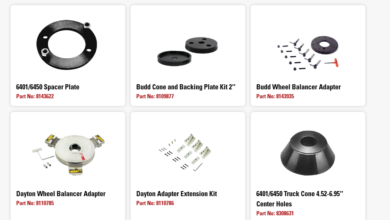Nail Polish Manufacturing Plant Project Report 2024: Required Materials and Setup
Nail Polish Manufacturing Plant Project Report

Introduction
Nail polish, a popular cosmetic product used for aesthetic enhancement, has become a staple in the beauty industry. With a growing consumer base and an increasing trend toward personal grooming, the demand for nail polish is on the rise. This Nail Polish Manufacturing Plant Project Report outlines the establishment of a nail polish manufacturing plant, covering market dynamics, raw materials, production processes, equipment requirements, and financial considerations.
Market Overview
The global nail polish market is expanding due to several key factors:
- Growing Beauty Consciousness: As beauty standards evolve, more individuals are investing in nail care products, leading to increased demand for nail polish.
- Innovative Formulations: The introduction of diverse nail polish formulations, such as quick-dry, gel, and eco-friendly options, has broadened consumer choices, further stimulating market growth.
- Social Media Influence: The rise of beauty influencers and social media platforms has fueled interest in nail art and creative designs, driving the demand for a variety of nail polish colors and finishes.
- Expansion of Retail Channels: The growing number of beauty stores, e-commerce platforms, and salons offering nail services has made nail polish more accessible to consumers.
Given these dynamics, setting up a nail polish manufacturing plant presents a lucrative business opportunity.
Get a Free Sample Report with Table of Contents @
Project Overview
1. Location Selection
Choosing the right location for the manufacturing facility is crucial for operational success. Key factors to consider include:
- Proximity to Suppliers: The plant should be situated near suppliers of raw materials to minimize transportation costs.
- Infrastructure: Access to utilities (water, electricity) and transportation networks is vital for smooth operations.
- Regulatory Environment: The selected location must comply with safety and environmental regulations pertaining to cosmetic manufacturing.
2. Raw Materials
The primary raw materials needed for nail polish production include:
- Film-forming Agents: Such as nitrocellulose, which provides the base structure for the polish.
- Solvents: Common solvents include ethyl acetate and butyl acetate, used to dissolve other ingredients and aid in the application.
- Plasticizers: Compounds like dibutyl phthalate (DBP) are added to improve flexibility and prevent chipping.
- Colorants: Pigments and dyes are used to provide a variety of colors and finishes.
- Additives: Various additives, such as UV stabilizers and anti-settling agents, enhance the performance and shelf life of the product.
Establishing a reliable supply chain for these materials is essential for uninterrupted production.
3. Manufacturing Process
The manufacturing process for nail polish typically involves several key steps:
Step-by-Step Manufacturing Process:
- Preparation of Raw Materials: All raw materials are gathered, weighed, and prepared for mixing.
- Mixing: The film-forming agents, solvents, plasticizers, and colorants are combined in a mixing tank. This process may involve high-shear mixing to ensure uniform dispersion.
- Dispersion: Pigments and colorants are added to the mixture and thoroughly dispersed. This step is crucial to achieve the desired color and consistency.
- Filtration: The mixture is then filtered to remove any undispersed particles or impurities, ensuring a smooth final product.
- Quality Control: Rigorous quality control tests are conducted on the final product to ensure it meets industry standards. Tests may include viscosity measurements, color matching, and stability testing.
- Packaging: Once quality control is complete, the nail polish is packaged in suitable containers (bottles or jars) for distribution.
4. Machinery and Equipment
Setting up a nail polish manufacturing plant requires specific machinery and equipment, including:
- Mixing Tanks: High-shear mixers or homogenizers are essential for achieving a uniform mixture of ingredients.
- Filtration Systems: Equipment for filtering the mixture to ensure a smooth and consistent product.
- Quality Control Instruments: Instruments for testing viscosity, color, and other quality parameters.
- Packaging Machines: Automated bottling and labeling machines to streamline the packaging process.
Investing in modern equipment can enhance production efficiency and product quality.
Financial Considerations
1. Capital Investment
Establishing a nail polish manufacturing plant requires significant capital investment. Key areas of expenditure include:
- Land and Infrastructure: Costs associated with purchasing land and constructing manufacturing facilities that comply with regulatory standards.
- Machinery and Equipment: The purchase of mixing tanks, filtration systems, and packaging machines represents a significant investment.
- Working Capital: Funds are needed for initial raw material purchases, labor costs, and operational expenses.
2. Operational Costs
Operational costs will include:
- Raw Materials: Expenses related to sourcing film-forming agents, solvents, plasticizers, colorants, and additives.
- Labor Costs: Salaries for skilled and unskilled workers involved in the manufacturing process.
- Utilities: Expenses for electricity, water, and other essential services.
- Maintenance: Ongoing maintenance costs for machinery and equipment.
Effective cost management strategies, such as negotiating bulk purchase agreements and optimizing production processes, can enhance profitability.
3. Revenue and Profitability
Revenue generation will depend on production capacity, product pricing, and market demand. The nail polish manufacturing business can be profitable, especially if the plant can produce high-quality products at competitive prices.
Factors influencing profitability include:
- Market Demand: Understanding and adapting to market trends can help align production with consumer needs.
- Product Quality: Ensuring high-quality products can lead to repeat customers and establish a strong market reputation.
- Cost Efficiency: Reducing production costs through process optimization and efficient resource management can improve profit margins.
FAQs
1. What is nail polish used for?
Nail polish is a cosmetic product applied to nails for aesthetic enhancement, providing color and shine.
2. What are the main raw materials needed for nail polish production?
The primary raw materials include film-forming agents, solvents, plasticizers, colorants, and various additives.
3. What is the manufacturing process for nail polish?
The process involves the preparation of raw materials, mixing, dispersion, filtration, quality control, and packaging of the final product.
4. What are the potential challenges in establishing a nail polish manufacturing plant?
Challenges may include sourcing quality raw materials, adhering to regulatory requirements, managing operational costs, and ensuring consistent product quality.
5. How can a nail polish manufacturing plant ensure profitability?
Profitability can be achieved by optimizing production efficiency, maintaining high product quality, adapting to market trends, and effectively managing costs.
Related Reports
https://www.expertmarketresearch.com/articles/top-lead-acid-battery-for-energy-storage-manufacturers
https://www.expertmarketresearch.com/reports/india-tyre-market
https://www.expertmarketresearch.com/articles/top-mayonnaise-companies
Media Contact:
Company Name: Claight Corporation
Contact Person: Lewis Fernandas, Corporate Sales Specialist — U.S.A.
Email: sales@expertmarketresearch.com
Toll Free Number: +1–415–325–5166 | +44–702–402–5790
Address: 30 North Gould Street, Sheridan, WY 82801, USA
Website: www.expertmarketresearch.com
Aus Site: https://www.expertmarketresearch.com.au


